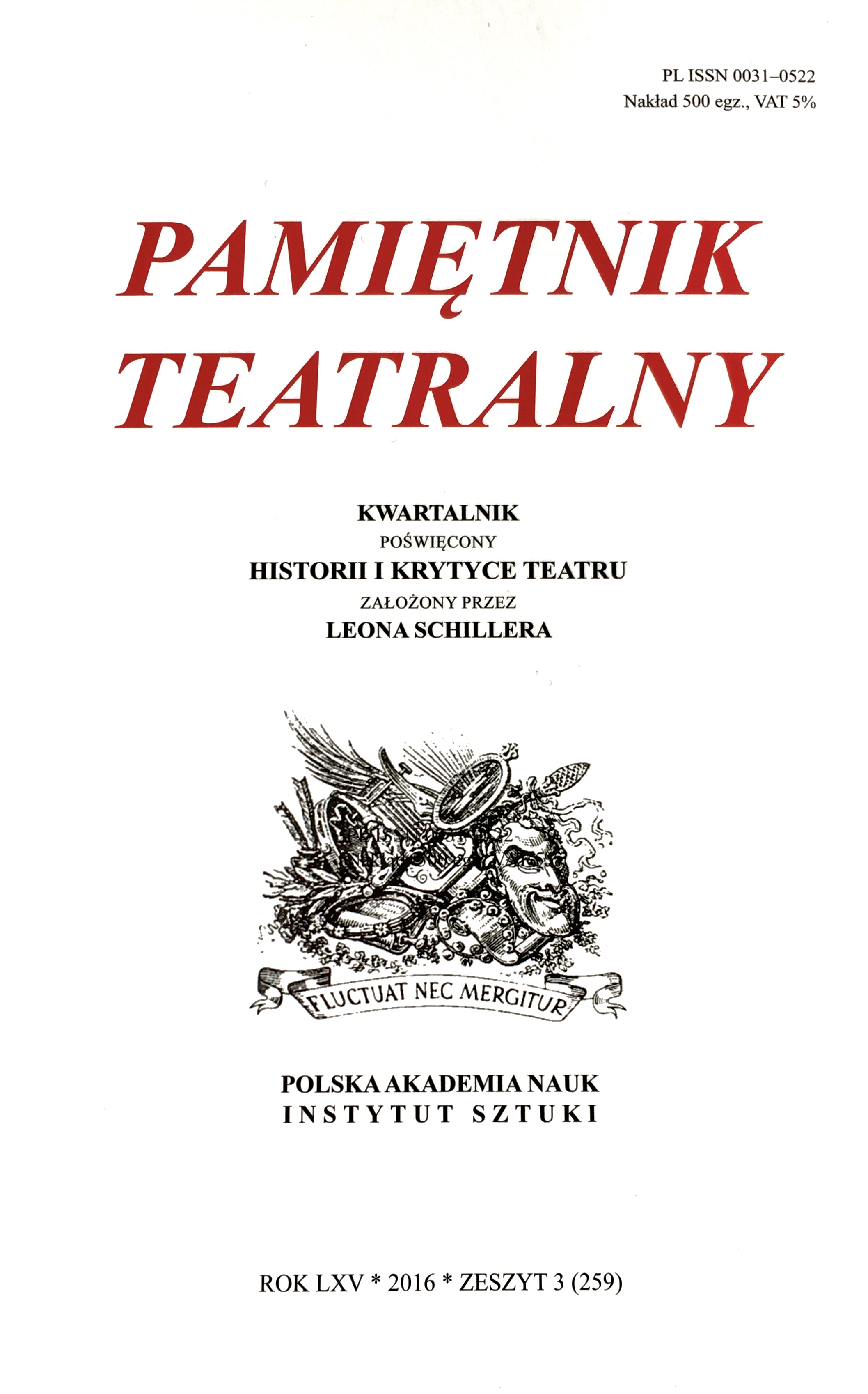„Nie można obejść się bez teatru”
“We Can’t Do Without Theatre”
On the Levels of Metatheatricality in The Seagull by Anton Chekhov
Author(s): Magdalena HasiukSubject(s): Theatre, Dance, Performing Arts
Published by: Instytut Sztuki Polskiej Akademii Nauk
Keywords: Czechow;Chekhov;metatheatre
Summary/Abstract: The Seagull (1896) holds a special place in the oeuvre of Anton Chekhov for the richness of metatheatrical devices deployed in it. It is the only drama by the playwright where one can find all the kinds of metatheatricality distinguished by Sławomir Świontek. It may be worth to add a fourth kind that manifests itself at the level of composition of the dramatic form and has been defined as “a play with genres” (Ewa Partyga) or “quoting of structures” (Danuta Danek). The present study of kinds of metatheatricality reveals Chekhov’s emphasis on the multitude of ways in which the audience can play a creative part in the theatre experience. The dramatist vindicates some elements hitherto considered to be secondary, passive, and weak. At the same time, Chekhov uses the image of the theatre of everyday life in order to expose the inner workings of society’s oppression that crushes its most sensitive individuals. This situation becomes a mirror for the processes going on within the self (as conceived of by the Dialogical Self Theory by Hubert Hermans). The disfunctionality of the world presented in the drama indicates fractures within the human psyche, where weaker personal positions must be suppressed or eradicated. The aim of the metatheatrical devices utilised in The Seagull is to construct a multi-level representation of reality and to display the multitude and changeability of personal perspectives on the reality, which illuminate one another. Out of this multitude of points of view and diversity of personal voices, Chekhov constructs a thoroughly modern representation of the world, whose governing principle combines dialogicality and theatricality.
Journal: Pamiętnik Teatralny
- Issue Year: 259/2016
- Issue No: 3
- Page Range: 151-168
- Page Count: 18
- Language: Polish

